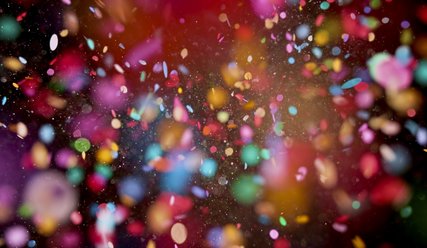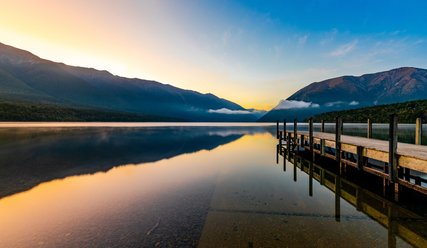Summer Memoir contest winner: Dr Lucy O’Hagan
50 YEARS OF HISTORY
When you have lived through it, you remember the feel of it, the shifts in the social and professional landscape.
1974
I was 10 when the RNZCGP started. I was no doubt oblivious to this, except that I was born in Southland where the first GP training in New Zealand begun in 1972. I don’t recall having a family GP, likely because my dad was a doctor, so why would we go to another one? In the next 40 years, the New Zealand Medical Council would put out a statement on giving care to those close to us.
I do have a vivid memory of my dad arriving in the living room where I was playing on the carpet, and injecting something into my arm. In another 30 years, the College started Cornerstone accreditation which included standards for managing the cold chain. Despite my father sounding like a slight loose cannon, he was a well-respected teacher in that first GP training scheme. With that middle-class medical family, I was bound to end up a doctor, except that when I was a child, all the doctors I met were male and they had alongside them, backing them up, running their families another person called the doctor’s wife.”
1984
The College is 10 and I’m a 20-year-old, having a year off medical school. Around 40 percent of my class took a year off, mainly to grow up. We had no idea what a CV was, it only cost $300 per year to study medicine, and we were paid a student bursary to cover living costs, so a year sifting around or travelling was just right.
In 1983 at Otago, we were the first second year med class to be half female. We were feminist, we needed to be. I never met a female doctor until the 4th year, when the wonderful Janne Bills came and talked to us about mental health problems in rural practice. We still smoked cigarettes in the med school café; there was an ashtray beside the pinball machine. It was not until 1990 that legislation stopped smoking inside public buildings, schools, shops and restaurants. This included stopping GPs smoking in their consulting rooms which was not uncommon.
Social justice was gathering momentum, homosexual law reform was passed in 1986. The most radical thing that happened in medical school was a visit from a professor asking us to join the IPPNW, International Physicians for the Prevention of Nuclear War. The nuclear arms race was the biggest threat to our generation. In the 1985 Oxford Union debate, David Lange gave the famous retort: ‘hold your breath just for a moment... I can smell the uranium on it…!’
I was always going to be a GP, but it was a long time before I met any GPs and only because I was a student rep at an education meeting. Pat Farry and Campbell Murdoch were there – inspirational, enthusiastic, provocative and unafraid. Here were my people. In 1983, Campbell became the first professor of general practice in New Zealand. He recently said: ‘The fact that general practice was academic enough to have a professor came as a great shock to many people’.
The first kohanga reo opened in Wainuiomata in 1982, so it wasn’t until the late 1990s that Lily Fraser became the first Kura Kaupapa graduate to go to medical school. There were of course te reo speaking Māori doctors around in the 1980s, most memorable for me was Pat Ngata. I was one of the house surgeons from the ‘Cook hospital’ on a local marae, where Pat with that cheeky grin wove us seamlessly between te reo Māori and English, leading us gently into what was to come in the next few decades.
I can’t recall the hauora Māori teaching I had at medical school, but it would have been called Maori health. Macrons appeared much later. Maybe there was an optional visit to Otakou marae. Mason Durie wrote Te Whare Tapa Whā in 1984, so that could have been in the curriculum. I feel like I learned about tapu and noa, ‘don’t touch their head’, but mostly I didn’t have a clue.
1994
By 1994 the College had been going for 20 years, and I was 30. I was interviewed for the general practice training programme (GPTP) over the phone by Pat Farry. I was camping in the north of Scotland, it was 6 am and I’d emerged out of a tent, put on my homespun wool outdoor gear, and found a red phone box; Icebreaker started in 1995, before that we had polyprops or we knitted. I have no recollection of how that interview was arranged, but I must have received a typed letter from the College, then replied with a handwritten letter from me.
My GP training year was magic and radical. Lead by the enthusiasm of Pat Farry, eight of us told our life stories. We took as long as was needed, no one had a computer, PowerPoint was unheard of, so we pulled photos out of albums and passed them around. It was an astounding learning to hear doctors honestly share their lives and to realise that people’s stories are not always how they seem.
At GPTP seminars we consulted with the Whelan family, said verbally they sounded like the Feeling family and indeed they had multiple crises: the father was an alcoholic who sexually abused the daughter and every week there was a new and challenging visit to the GP. The Whelan family were a complete fabrication out of Pat Farry’s mind, and they were acted by one of the first groups to play simulated patients in New Zealand. The tricky thing was the actor, who was the father, and the woman, who played his abused daughter, were in real life married. It was disturbing to see them in the street, holding hands. On our Saturday actor sessions, the Whelans were real.
By 1994, the clinical exam with actors had been going for a while. The only case I recall was giving an amniocentesis result to a Māori woman 19-weeks pregnant, carrying a baby with trisomy 23. I was probably nice but completely out of my depth. The Māori actor was very kind to me.
Twenty years after my exam, the NZ Medical Journal would publish an account of the Meihana model and twenty-six years later, the College would pay me as a medical educator to do the MIHI course, learning how to teach the Meihana model. Two years after that in 2022, the lead author Suzanne Pitama became the first Māori female Dean and Head of Campus at the University of Otago in Christchurch. In 1994, that seemed unimaginable.
We were known by older GPs as the me generation but we sure weren’t going to be GPs who did every night on call and a hundred deliveries a year. We didn’t have wives for a start! So, the year after GPTP, three of us trainees set up our own practice in Wānaka. We wanted to do it our way. We consulted in a converted sleepout and garage, at the back of the dentist, which was itself in an old crib. We had paper notes and a big green appointment book, and we made a GMS claim for every patient we saw, using a form that was posted to the Ministry of Health.
I didn’t become a Fellow of College until 2001, nearly a decade after completing GPTP. To be fair although, general practice was approved as a speciality by the medical council in 1978, it only became a speciality in New Zealand law in 1995, and the pathway to Fellowship was evolving. From memory, we couldn’t see the point, until suddenly it was decided that if you didn’t have Fellowship, you couldn’t do Special Authorities. There was a flurry of applications!
The College started the first formal continuing professional development programme (MOPS meaning Maintenance of Professional Standards) in 1999, so we were already on some sort of pathway. Capitation was introduced in 2002. Surely, we were computerised by then?! It was certainly a mission to get all that data from those folders of notes typed into an early version of Medtech.
2004
By 2004 the College was 30 and I was 40. I was a regular attender at College conferences and an in-practice teacher. I had started post-graduate study in the fantastic Masters of GP programme at Otago. We were immersed in teaching and learning (the local College faculty paid our fees for that paper) the philosophy and anthropology of medicine, as well as ethics.
Our practice completed Cornerstone accreditation around 2008. We were all a bit sceptical because we thought our practice had good processes, although none were written down. It was slightly mortifying that for each process we discussed, every member of staff had a different version of what our current policy was!
A highlight of the teaching in the 2000s was the orientation weekend, where all the South Island registrars, seminar teachers and in-practice teachers (medical educators came as a slightly pompous title much later) gathered at Lake Ohau lodge for what we might now call whakawhanaungatanga but in the early 2000s that is a word way in the future for most of us. We did consultations with actors; it was fantastic. Another teaching highlight was Edcon, a conference every two years for all medical educators and teachers, fully funded by the College. Sadly, the last Edcon was 2016.
By 2011 we had moved on from the old crib and built a fantastic new health hub in Wānaka, hosting two medical centres, a physio, an optometrist, a pharmacy, a dentist, a radiology and specialist clinics all designed with light and space, and a central atrium with a café.
2014
In 2013 the College was 40 and I was 50, just the right age for a midlife crisis. That’s a story I will tell elsewhere, but the result was a spectacular case of burnout. Yes, me. It was a recovery marked by coming to terms with a sense of shame and failure, realising that being humbled isn’t such a bad thing (we doctors are a bit full of ourselves after all) and two years later, getting up at a College conference to speak about it. You have to be through the shame to do that! I now put burnout on my CV, best professional development ever.
2024
In 2021 the College introduced Te Ahunga, welcoming the new registrars into general practice with a noho marae. The Head of Equity and the incredible young Māori GPs have powered us into a whole new way of being doctors for Aotearoa. The clinical exam now involves cultural safety, whakawhanaungatanga, mana enhancing care, pro equity practice and the Meihana model, which unpacks the forces of colonisation that walk through the door with our patients. I am a medical educator for the College, leading a team who have re-written the communication skills modules to reflect this kaupapa.
Our team also supports GPEP year 1 registrars who need extra mentoring or teaching, including around 25 registrars in the Whakatipu group, who speak English as second (or sometimes 6th) language, or who registered though the NZRex system. They represent a multicultural Aotearoa – a Chinese registrar in Auckland does 60 percent of his consultations in Mandarin. They are from Malaysia, India, Sri Lanka, Sudan, Iran, Iraq, Estonia, Afghanistan, South America, some trained in Russia. They bring incredible life stories, a keenness to learn and a graciousness. They are teaching me, and I am reminded of the Māori kupu ako to teach and to learn.
There are huge challenges for general practice, including funding, overwork, and a lack of recognition, but we have been through these times before and we will emerge out of this again, perhaps better. Crises force creativity and reimagining. There are huge opportunities including digital health, the growth of nurse practitioners and a vibrant and diverse primary healthcare workforce. And there are the incredible GP registrars I teach, who haven’t lived the history but can reimagine the future.


